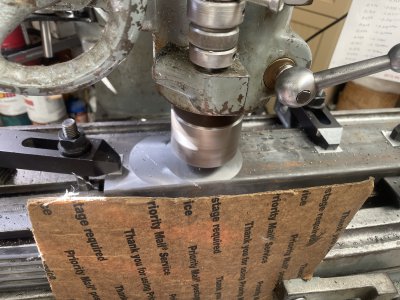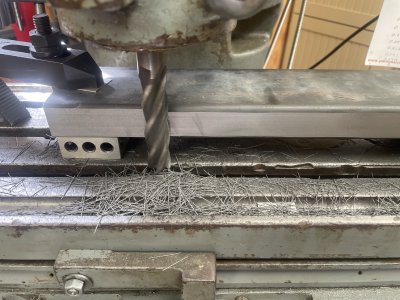Welll, I got started and then got called away for a work emergency (that’s about normal for me). But here are some pics the progress so far.
To catch everyone here up, Richard has been giving me some advise over on his FB group. He suggested I use the technique illustrated in this thread on PM:
https://www.practicalmachinist.com/...ag-12-restoration-progress-237940/index3.html
The author formed the mating sides (the ‘flat’ side and the ‘tapered’ side) by side milling. The reason Richard suggested this method is that the tables on old mills tend to sag at the ends of their travel. (My mill definitely fits into the “old, worn out” category!)
With a long gib such as mine, this would be a problem if I was to form the mating sides by end milling.
The material I am using is a bar of extruded gray iron about 1-1/4” thick and 3-1/4” wide. I cut it to 15” long, which is how long I decided to make the gib. I then clamped it to the table and cleaned up one wide face with a fly cutter.

Out of curiosity, after milling I put the bar on my surface plate. It hinges exactly in the middle and I’m able to insert a 0.002” feeler gage under both ends. That would definitely be a problem if I was forming the taper by end milling!
Next, I turned it over and clamped it to some 123 blocks to clean up one narrow side.

That’s when I had to quit. My shop time is going to be hit or miss for the next week, but I’ll post updates on my progress when I can.


